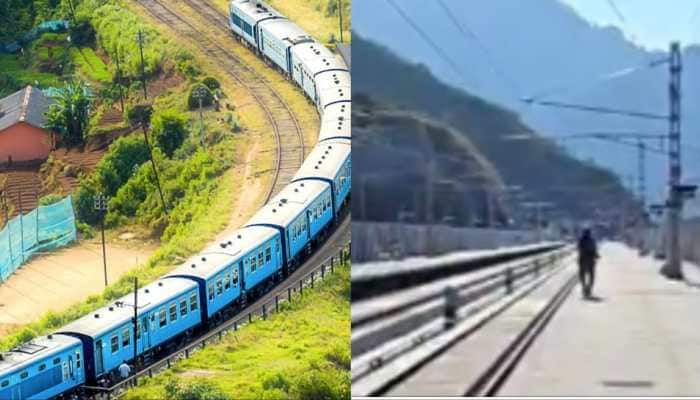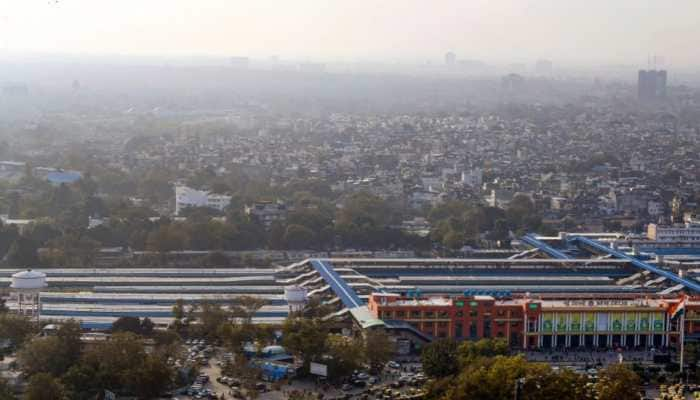E-mpowering rural India through Internet
Shyam – an Indian villager is a hi-tech person. Although he is not a tech geek, but still he is equipped with modern communication devices like mobile and a computer powered by Internet connection through which he extracts the latest information regarding the local weather conditions, crop prices in local markets and trade in the commodity market.
Trending Photos
)
By: Kapil Ohri
Shyam – an Indian villager is a hi-tech person. Although he is not a tech geek, but still he is equipped with modern communication devices like mobile and a computer powered by Internet connection through which he extracts the latest information regarding the local weather conditions, crop prices in local markets and trade in the commodity market. Yes, this is actually the “Rising India” or the “Changing face of India” in which villagers are getting as technology savvy as people in metros are, in their day-to-day life.
73% of Indians (Census 2001) live in rural India and if we want India to change or rise we need to empower these 73% Indians. This empowerment of rural Indians is not a social development aspect anymore instead it’s an opportunity for the upcoming revenue stream and this proposition is well understood by various business organizations so they have started making every possible effort to make inroads into the Indian rural market. All in all, we can say that this business objective combined with social development aspect is the new mantra to empower rural Indians. Although there are various ways to empower people living in rural areas but seeing the upsurge of Internet usage, it seems to be, one of the best ways for the development of rural India providing the villagers with the facility to communicate, extract information, perform e-commerce, e-learning and e-medicine etc. Now let us see how some organizations are using Internet to touch the lives of the Indian masses and bring about a positive change.
Taking Internet to villages
There are organizations that believe in going to villages and provide the villagers with hardware, Internet connection and guidance in order to carry out various activities like e-learning, e-commerce and e-health etc for the development of villagers.
United Villages, a US-based organization founded by Amir Alexander Hasson, which started its Indian operations in 2006, is actively working in Indian villages in Orissa to provide wireless Internet connectivity through Wi-fi to rural folk using its unique DakNet service.
Chintan Bakshi (COO) of United Villages, India in an interview with Kapil Ohri talked about the work United Villages is doing in the villages of Bhubaneswar (Orissa). What are the various services United Villages provide to the villagers in Bhubaneswar? And what is its modus operandi?
United Villages basically provide three types of services to the villagers enabled through its DakNet services and we charge for them using prepaid cards system.
1. Information service: Villagers can order any type of information they want on career, health etc. which is difficult to get in a village. We collect information at our end and deliver them through our kiosk in the village.
2. Communication service: Villagers can record voice message in the kiosk/computer system at the franchisee’s place. A three-minute voice message costs 90 paisa anywhere in India. Similarly text message costs one rupee per message. Villagers can also send video message using web camera installed at the kiosk.
3. E-commerce: Villagers can order anything which is not available locally like books or music cassettes etc., United Villages purchases it from the city and delivers it back to the villager.
Modus Operandi
Franchise and kiosk: We appoint a villager as a franchisee of United Villages and a computer system called kiosk is set up at his place. He is provided with prepaid cards. Now the villagers who want to extract any information or send any voice message, text message or video message or want to purchase any product which is not available locally, buy a prepaid card from him and uses this card to order information, do any communication or purchase any product. This kiosk is actually offline but it stores the web pages that can be transmitted through DakNet service.
DakNet service: United Villages has buses, which are fitted with short range Wi-fi system and antenna. These buses go to the villages and using its Wi-Fi system pick up the information stored in the computer/kiosk of franchisee. The information transfer from kiosk to the system in Wi-fi bus happens at a very fast speed. After collecting the information from villages, buses come to the United Villages city office which has broadband Internet connection, here the information/messages collected from villages is transmitted to the computers in the office and from there they are finally relayed to the required destination. The required information is collected or e-mails are received and stored or anything ordered by villager say a book is purchased. Information/messages stored in web pages are transmitted to the system in the Wi-Fi bus and goods ordered by villagers are kept in the buses. Now when the bus goes back to the villages, information and messages are transmitted to the Franchisee’s kiosk using Wi-fi system and goods are delivered to the villagers. This is similar to postal service – that’s why we call it DakNet (Postal network).
What is the reach of United Villages in India?
We started in India around June, 2006 and we have started with Bhubaneswar (Orissa) as of now covering 15 villages and 1 franchise in each village and we have around 7-8 Wi-fi buses with us.
One of the other web-based initiatives is ITC’s e-choupal launched in the year 2000 and it covers 3.5 million farmers in 31,000 villages through 5200 kiosks across six states (Madhya Pradesh, Maharashtra, Karnataka, Andhra Pradesh, Uttar Pradesh and Rajasthan). They help farmers in the villages to get information on crops, weather conditions, fertilizers and help them to trade in local mandi (market). Their modus operandi involves the setting up of computer system (kiosk) in the village that is managed by a farmer called “Sanchalak”. Through this system (kiosk) villagers can collect information in their local language on the weather, crop prices in the market, scientific farm practices and perform e-trading for sale of crops, purchase of farm equipments and fertilizers etc. The portal echoupal.com is available in regional languages.
Localization of content
Think global- act local. For various business organizations in India like HLL and ITC this is not a new mantra anymore but its importance is now recognized by various Internet- based organizations too and they have understood that if they want to reach the masses they have to adopt this strategy. The result of this strategy is the “localization of content” on their websites.
Various Internet portals that used to provide their content in English only have now diversified into regional languages’ content too in order to reach the masses. Like Yahoo India has launched seven regional language portals (Hindi, Gujarati, Tamil, Punjabi, Kannada, Malayalam and Telugu) apart from the English one. Google search is now available in Hindi, Bengali, Tamil, Telegu, Marathi and English. India-based Internet search engine Guruji.com also gives an option to search in Hindi, Kannada, Telegu and English. These are the few examples which show that the importance of rural India is very well recognized by organizations ranging from United Villages, ITC e-choupal to big Internet portals like Google and Yahoo. Although they are driving in the rural areas for their own profit but the bottomline is – their web-based endeavours are actually empowering India and helping rural India get connected.
Shyam – an Indian villager is a hi-tech person. Although he is not a tech geek, but still he is equipped with modern communication devices like mobile and a computer powered by Internet connection through which he extracts the latest information regarding the local weather conditions, crop prices in local markets and trade in the commodity market. Yes, this is actually the “Rising India” or the “Changing face of India” in which villagers are getting as technology savvy as people in metros are, in their day-to-day life.
73% of Indians (Census 2001) live in rural India and if we want India to change or rise we need to empower these 73% Indians. This empowerment of rural Indians is not a social development aspect anymore instead it’s an opportunity for the upcoming revenue stream and this proposition is well understood by various business organizations so they have started making every possible effort to make inroads into the Indian rural market. All in all, we can say that this business objective combined with social development aspect is the new mantra to empower rural Indians. Although there are various ways to empower people living in rural areas but seeing the upsurge of Internet usage, it seems to be, one of the best ways for the development of rural India providing the villagers with the facility to communicate, extract information, perform e-commerce, e-learning and e-medicine etc. Now let us see how some organizations are using Internet to touch the lives of the Indian masses and bring about a positive change.
Taking Internet to villages
There are organizations that believe in going to villages and provide the villagers with hardware, Internet connection and guidance in order to carry out various activities like e-learning, e-commerce and e-health etc for the development of villagers.
United Villages, a US-based organization founded by Amir Alexander Hasson, which started its Indian operations in 2006, is actively working in Indian villages in Orissa to provide wireless Internet connectivity through Wi-fi to rural folk using its unique DakNet service.
Chintan Bakshi (COO) of United Villages, India in an interview with Kapil Ohri talked about the work United Villages is doing in the villages of Bhubaneswar (Orissa). What are the various services United Villages provide to the villagers in Bhubaneswar? And what is its modus operandi?
United Villages basically provide three types of services to the villagers enabled through its DakNet services and we charge for them using prepaid cards system.
1. Information service: Villagers can order any type of information they want on career, health etc. which is difficult to get in a village. We collect information at our end and deliver them through our kiosk in the village.
2. Communication service: Villagers can record voice message in the kiosk/computer system at the franchisee’s place. A three-minute voice message costs 90 paisa anywhere in India. Similarly text message costs one rupee per message. Villagers can also send video message using web camera installed at the kiosk.
3. E-commerce: Villagers can order anything which is not available locally like books or music cassettes etc., United Villages purchases it from the city and delivers it back to the villager.
Modus Operandi
Franchise and kiosk: We appoint a villager as a franchisee of United Villages and a computer system called kiosk is set up at his place. He is provided with prepaid cards. Now the villagers who want to extract any information or send any voice message, text message or video message or want to purchase any product which is not available locally, buy a prepaid card from him and uses this card to order information, do any communication or purchase any product. This kiosk is actually offline but it stores the web pages that can be transmitted through DakNet service.
DakNet service: United Villages has buses, which are fitted with short range Wi-fi system and antenna. These buses go to the villages and using its Wi-Fi system pick up the information stored in the computer/kiosk of franchisee. The information transfer from kiosk to the system in Wi-fi bus happens at a very fast speed. After collecting the information from villages, buses come to the United Villages city office which has broadband Internet connection, here the information/messages collected from villages is transmitted to the computers in the office and from there they are finally relayed to the required destination. The required information is collected or e-mails are received and stored or anything ordered by villager say a book is purchased. Information/messages stored in web pages are transmitted to the system in the Wi-Fi bus and goods ordered by villagers are kept in the buses. Now when the bus goes back to the villages, information and messages are transmitted to the Franchisee’s kiosk using Wi-fi system and goods are delivered to the villagers. This is similar to postal service – that’s why we call it DakNet (Postal network).
What is the reach of United Villages in India?
We started in India around June, 2006 and we have started with Bhubaneswar (Orissa) as of now covering 15 villages and 1 franchise in each village and we have around 7-8 Wi-fi buses with us.
One of the other web-based initiatives is ITC’s e-choupal launched in the year 2000 and it covers 3.5 million farmers in 31,000 villages through 5200 kiosks across six states (Madhya Pradesh, Maharashtra, Karnataka, Andhra Pradesh, Uttar Pradesh and Rajasthan). They help farmers in the villages to get information on crops, weather conditions, fertilizers and help them to trade in local mandi (market). Their modus operandi involves the setting up of computer system (kiosk) in the village that is managed by a farmer called “Sanchalak”. Through this system (kiosk) villagers can collect information in their local language on the weather, crop prices in the market, scientific farm practices and perform e-trading for sale of crops, purchase of farm equipments and fertilizers etc. The portal echoupal.com is available in regional languages.
Localization of content
Think global- act local. For various business organizations in India like HLL and ITC this is not a new mantra anymore but its importance is now recognized by various Internet- based organizations too and they have understood that if they want to reach the masses they have to adopt this strategy. The result of this strategy is the “localization of content” on their websites.
Various Internet portals that used to provide their content in English only have now diversified into regional languages’ content too in order to reach the masses. Like Yahoo India has launched seven regional language portals (Hindi, Gujarati, Tamil, Punjabi, Kannada, Malayalam and Telugu) apart from the English one. Google search is now available in Hindi, Bengali, Tamil, Telegu, Marathi and English. India-based Internet search engine Guruji.com also gives an option to search in Hindi, Kannada, Telegu and English. These are the few examples which show that the importance of rural India is very well recognized by organizations ranging from United Villages, ITC e-choupal to big Internet portals like Google and Yahoo. Although they are driving in the rural areas for their own profit but the bottomline is – their web-based endeavours are actually empowering India and helping rural India get connected.
Stay informed on all the latest news, real-time breaking news updates, and follow all the important headlines in india news and world News on Zee News.
Advertisement
Live Tv
Advertisement







)
)
)
)
)
)
)
)
)
)
